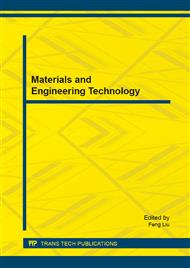p.336
p.346
p.352
p.359
p.365
p.369
p.376
p.381
p.388
Design of Composite Control System for an Air-Breathing Hypersonic Vehicle with Wing-Rudder Deflection
Abstract:
The Scramjet performance of air-breathing hypersonic vehicle is highly correlated with flight height, Mach and angle of attack (AOA). The violent disturbance of the AOA can cause the engine power off. Consequently the maneuverability of hypersonic vehicle is strictly limited in the phase of cruise. A composite Control system for an air-breathing hypersonic vehicle is presented. The hypersonic vehicle has a configuration with tail control rudders and a set of deflectable wings installed nearby the center of gravity. During the phase of cruise, the precision of AOA is achieved by deflecting tail rudders, and the maneuverable acceleration command is tracked by deflecting wings. A linear quadratic (LQ) track control algorithm with integrator is used to design the composite control system. Simulation results demonstrate that the composite control system has good performance in tracking AOA and acceleration command by respective deflection in cruise.
Info:
Periodical:
Pages:
365-368
Citation:
Online since:
January 2015
Authors:
Price:
Сopyright:
© 2015 Trans Tech Publications Ltd. All Rights Reserved
Share:
Citation:


